Frozen shoulder, also known as adhesive capsulitis, is a painful and debilitating condition that significantly limits your range of motion and hinders your ability to perform everyday activities. Simple tasks such as reaching for items on high shelves, getting dressed, or even brushing your hair can become frustratingly difficult. As the condition progresses, the pain and stiffness can become more pronounced, leaving you feeling helpless and restricted. However, recovery is possible, and one of the most effective ways to alleviate the discomfort and regain movement is through consistent, gentle stretching exercises.
Our Zeilmed shoulder pulley exercisers have been meticulously designed to help individuals suffering from frozen shoulder regain their mobility and reduce pain and stiffness through safe, effective, and controlled movement—right from the comfort of your home. These pulleys are easy to use and provide a cost-effective, non-invasive alternative to frequent physical therapy sessions, making them an excellent choice for those looking to take control of their recovery.
We offer three exceptional models of Zeilmed shoulder pulley systems—Economical, Regular, and Premium—each carefully developed to meet a variety of needs, preferences, and budgets. Whether you’re just beginning your recovery journey or looking for a more advanced tool to enhance your progress, there’s a Zeilmed pulley for you.
Economical Model (ZPP07) – RS 590
A perfect entry-level option, this model includes all the essential components for effective shoulder rehab. Its simple, no-fuss design delivers excellent results without stretching your budget.
Regular Model (ZPP08) – RS 950
Our most popular choice, this version offers enhanced ergonomic features and adjustability, making it ideal for those who want a more tailored rehabilitation experience.
Premium Model (ZPP09) – RS 1850
Crafted for superior comfort and performance, this top-tier model features premium-grade materials, a smoother pulley mechanism, and an elevated design that ensures a premium feel and function during every session.
Regardless of the model you choose, each Zeilmed shoulder pulley comes equipped with a comfortable hand support, an adjustable rope system, and the flexibility to be used over the door or with a wall mount. The adjustable mechanism allows you to increase the intensity of your stretches at your own pace, ensuring safe and progressive improvement in your shoulder mobility.
These exercisers are ideal for individuals at all stages of recovery—from those just beginning to address stiffness to those seeking to enhance flexibility and prevent recurrence. With regular use, you’ll notice improved range of motion, reduced soreness, and a return to everyday tasks with ease and confidence.
Their lightweight, portable design makes them easy to use at home, in the office, or even while traveling—so your rehab routine never needs to be interrupted. Say goodbye to the limitations of frozen shoulder and take a proactive step toward healing with Zeilmed.
Start your journey to recovery today with an effective, affordable, and comfortable solution—choose the Zeilmed shoulder pulley that fits your needs best.
Welcome! In this video, we’ll guide you through the process of assembling your shoulder pulley (model ZPP08). You’ll need the following components:
Unwrap the Rope:
Attach the Rope to the Handle:
Thread the Rope Through the Pulley:
Attach the Second Handle:
Position the Pulley and Attach the Wall Fixture:
Final Check:
Congratulations! Your shoulder pulley is now fully assembled and ready for use.
Q: What exactly is a shoulder pulley, and how does it work?
A: A Shoulder Pulley is a simple device commonly used in physiotherapy to help improve shoulder mobility. It typically consists of a rope and pulley system that allows you to gently stretch and move your shoulder through various ranges of motion. The main idea is to perform passive range of motion exercises, where you let the pulley do the work of moving your arm without engaging your muscles too much. This is especially helpful if you’re recovering from an injury or surgery.
Q: Why is it so important to keep my shoulder immobile after an injury or surgery?
A: After an injury or surgery, resting the shoulder is essential for healing. When the shoulder is kept still, it allows the body’s natural healing processes to take over without causing more harm to the injured tissues. For example, if you’ve broken a bone or torn a muscle, moving the joint too much could disrupt the healing process. That’s why doctors often recommend using a sling or other device to keep the shoulder in place. However, staying immobile for too long can cause other problems, which brings us to the next question.
Q: What problems can happen if I keep my shoulder immobile for too long?
A: While resting the shoulder is crucial at first, the body can sometimes overcompensate, and that’s where issues arise. If a joint isn’t used for a long period, it can start to freeze up. In addition, scar tissue may form around the joint, leading to pain and stiffness. This is especially true for those dealing with frozen shoulder (also called adhesive capsulitis), where the shoulder’s range of motion becomes severely limited. To prevent these complications, it’s important to do gentle, controlled movements — which is where a shoulder pulley comes in to help.
Q: How does a shoulder pulley help with frozen shoulder?
A: A shoulder pulley is a game-changer for people with frozen shoulder. In this condition, the shoulder’s movement becomes restricted, causing pain and stiffness. By using the pulley, you can perform passive range of motion exercises, where the shoulder is moved without the need for the muscles to do much work. This helps improve mobility by gently stretching the joint and preventing the formation of excess scar tissue. Over time, the pulley can help restore normal movement, making it an effective tool in treating frozen shoulder.
Q: Can I use a shoulder pulley at home to aid my recovery?
A: Yes, absolutely! One of the great things about a shoulder pulley is that it’s easy to use at home. Once you’ve been given the go-ahead by your physiotherapist, you can incorporate shoulder exercises into your daily routine. The pulley is great for passive range of motion exercises and can be used consistently to help you regain flexibility and strength. It’s a simple tool that can make a big difference in your recovery.
Q: What kind of exercises can I do with a shoulder pulley?
A: There are several exercises you can do with a shoulder pulley, all aimed at improving mobility and strength. Some of the most common include:
Passive range of motion exercises: These exercises help gently move the shoulder joint without requiring you to engage your muscles too much. They are especially useful in the early stages of recovery.
Stretching exercises: These help improve flexibility and ease any tightness in the shoulder area.
Strengthening exercises: Once your shoulder’s range of motion improves, you can gradually incorporate exercises that help build strength and prevent further injuries.
It’s important to follow a progressive plan to ensure you’re not overdoing it, especially in the beginning stages.
Q: Are there any safety tips I should be aware of when using a shoulder pulley?
A: Yes, when using a shoulder pulley, it’s important to take some precautions:
Always check with your physiotherapist before starting to make sure you’re using the pulley correctly.
Adjust the pulley to a level where you feel comfortable but not strained. It shouldn’t cause pain.
Start with gentle movements and gradually increase the intensity of the exercises as your shoulder heals.
If you feel pain or discomfort beyond what is normal, stop and reach out to your healthcare provider.
Q: How long do I need to use the shoulder pulley?
A: The length of time you’ll need to use a shoulder pulley depends on your injury and progress. For people dealing with a frozen shoulder or recovering from surgery, it could take weeks or even months of consistent use to see significant improvement. Your physiotherapist will guide you on how long and how often to use the pulley, but it’s crucial to stick with it and be patient. Always listen to your body, and remember that gradual improvement is key.
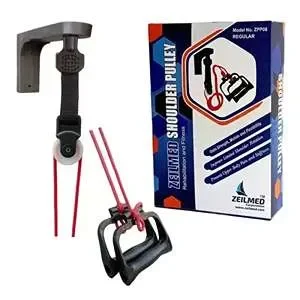
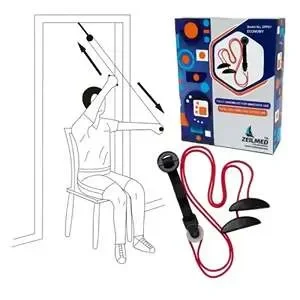

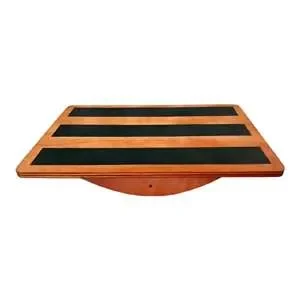

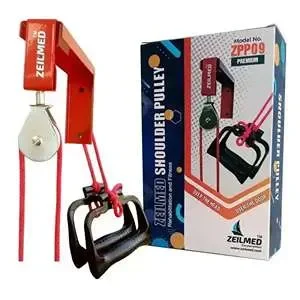
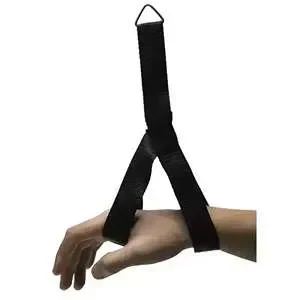
Chat with us...